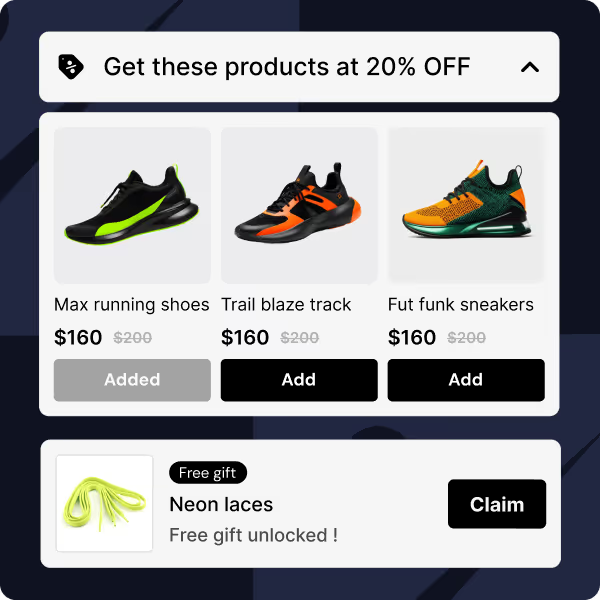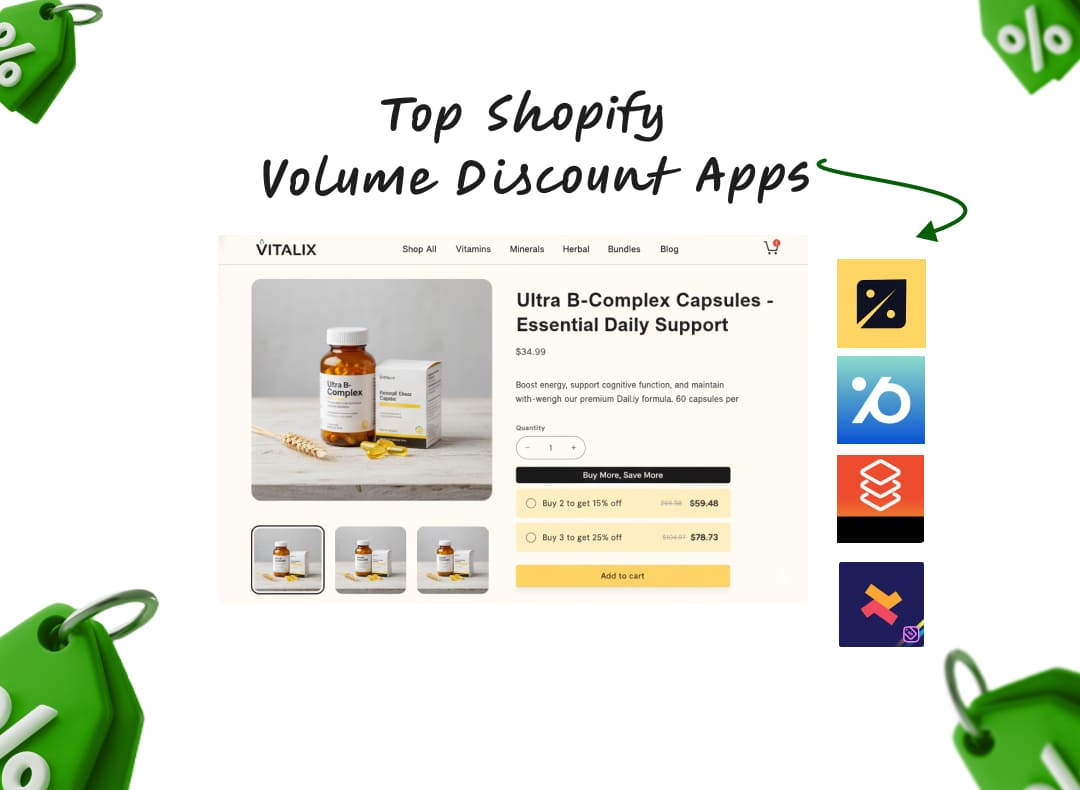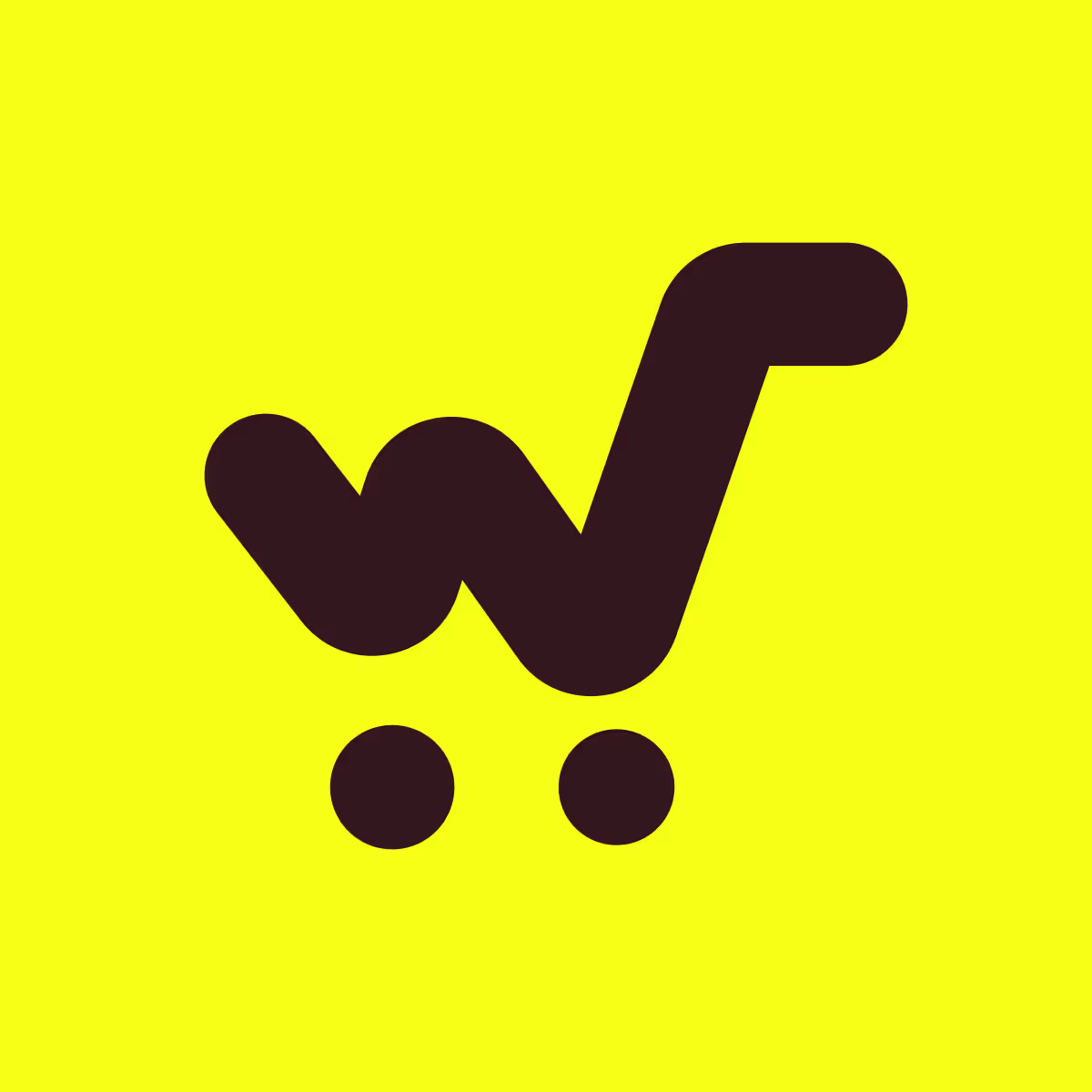Introduction: Understanding Ecommerce Conversion Rate Benchmarks
Ecommerce conversion rate benchmarks help businesses measure how effectively their online store turns visitors into customers.
In the fast-evolving digital commerce landscape, the average ecommerce conversion rate acts as a vital performance indicator. It tells you whether your website, products, and marketing strategies are effectively guiding shoppers toward making a purchase. In 2025, ecommerce conversion rates vary widely across industries—from luxury and fashion to food and beauty—depending on price sensitivity, user experience, and audience behavior.
A healthy conversion rate typically ranges between 2% and 4%, but this benchmark shifts significantly across verticals. For instance, personal care products see higher conversions due to recurring purchases, while electronics or luxury products often have lower rates due to longer buying cycles.
Platforms like Shopify, BigCommerce, and WooCommerce have made it easier to measure conversion rates accurately through built-in analytics. However, using AI-driven tools like Skailama Apps—which offer personalization, smart upsells, and behavior-based targeting—can further improve engagement and help stores reach or surpass industry averages.
Understanding these benchmarks allows ecommerce brands to:
- Evaluate their performance against industry peers.
- Identify bottlenecks in user experience.
- Implement data-driven optimization strategies.
In the following sections, we’ll explore average ecommerce conversion rate benchmarks by industry, by device, and by marketing channel, followed by actionable insights to boost conversions using personalization, analytics, and AI automation.
What is an Ecommerce Conversion Rate
Ecommerce conversion rate measures how many website visitors complete a desired action, such as making a purchase or signing up for a newsletter.
It’s one of the most important KPIs in ecommerce because it shows how effectively your store turns traffic into revenue. A high conversion rate means your marketing, UX, and product strategy are aligned with customer intent.
You can calculate your ecommerce conversion rate using a simple formula:
| Formula |
Example |
| (Total Orders ÷ Total Visitors) × 100 |
(200 ÷ 10,000) × 100 = 2% |
Tools like Google Analytics or Shopify’s built-in reports automatically calculate this for you. Advanced analytics platforms or Skailama Apps can go further by tracking micro-conversions, A/B test results, and personalized funnel performance.
Monitoring this rate consistently helps identify which pages, campaigns, or user segments are performing well—and which need improvement.
Average Ecommerce Conversion Rate in 2025
The average ecommerce conversion rate in 2025 ranges between 2% and 4%, depending on the industry, region, and traffic source.
Recent data from multiple studies, including Adobe, Speed Commerce, and ConvertCart, shows that while traffic volumes are increasing, only a small portion of visitors actually complete a purchase.
| Metric |
Average Conversion Rate (2025) |
| Global Ecommerce Average |
3.13% |
| Desktop |
4.8% |
| Mobile |
2.9% |
| Tablet |
3.25% |
Desktop continues to lead in conversions due to better usability, though mobile dominates in overall traffic. Brands using Skailama personalization tools report higher mobile conversion rates through targeted offers and optimized checkout flows.
Keeping your conversion rate above the 2% mark generally indicates your ecommerce funnel is performing well—but top-performing industries regularly achieve 4% and beyond.
Ecommerce Conversion Rate by Industry
Ecommerce conversion rates differ significantly across industries based on pricing, purchase intent, and customer behavior.
Lower-priced or repeat-purchase products (like food or beauty) often convert better than luxury or high-ticket items that require longer decision cycles.
| Industry |
Average Conversion Rate (2025) |
Insights |
| Personal Care & Beauty |
6.8% |
High loyalty, repeat purchases, strong personalization. |
| Food & Beverage |
4.9% |
Frequent orders, trust and labeling drive conversions. |
| Electronics & Appliances |
3.6% |
Higher AOV, but complex decision-making cycle. |
| Retail & Fashion |
1.9% |
Style-driven, needs visual UX and faster checkout. |
| Pet Care |
2.3% |
High mobile sales; subscription options work well. |
| Home Decor & Furniture |
1.4% |
Hesitation due to price and quality trust issues. |
| Automobile & Parts |
2.1% |
Long research phase; clear warranties improve trust. |
| Luxury & Jewelry |
0.9% |
Low conversion; requires storytelling and premium UX. |
| Cookware & Kitchenware |
1.5% |
Higher trust leads to repeat buyers over time. |
Industries like personal care and food outperform because of smaller ticket sizes and customer loyalty. Meanwhile, luxury, furniture, and fashion brands must rely more on trust signals and social proof to drive purchases.
Using Skailama’s AI-powered apps for personalization and smart product recommendations can significantly improve these benchmarks across categories.
Ecommerce Conversion Rate by Device
Ecommerce conversion rates vary greatly by device, reflecting how and where customers prefer to shop.
Desktop still delivers the highest conversion rate, even though most traffic now comes from mobile users.
| Device Type |
Average Conversion Rate (2025) |
Key Insight |
| Desktop / Laptop |
4.8% |
Strong buyer intent and better checkout experience. |
| Mobile |
2.9% |
High traffic but lower conversions due to UX friction. |
| Tablet |
3.25% |
Moderate conversions with hybrid browsing behavior. |
Mobile commerce accounts for over 70% of global ecommerce traffic, but shoppers still complete purchases more comfortably on desktops due to speed, visibility, and ease of navigation.
Stores using Skailama Checkout Wiz and Easy Bundles have seen improved mobile checkout performance through optimized page loads, autofill features, and personalized offers.
Optimizing for mobile-first experiences, faster load speeds, and simplified forms can help bridge the gap between browsing and buying.
Ecommerce Conversion Rate by Marketing Channel
Ecommerce conversion rates depend heavily on where the customer originates from — whether organic search, paid ads, or email campaigns.
Some channels naturally perform better due to higher buyer intent or personalization opportunities.
| Marketing Channel |
Average Conversion Rate (2025) |
Insight |
| Email Marketing |
10.3% |
Highest conversion rate; strong ROI from segmentation and automation. |
| Organic Search |
2–4% |
Consistent conversions with high-intent traffic and SEO-optimized pages. |
| Paid Search (PPC) |
2–3% |
Works best when aligned with buyer intent and optimized ad copy. |
| Referral Traffic |
2.9% |
Strong trust factor from affiliate or third-party recommendations. |
| Social Media |
1.5% |
High awareness but low purchase intent; boosted by influencer content. |
| Direct Traffic |
3.3% |
Indicates strong brand recognition and repeat customer behavior. |
Channels like email and referrals continue to outperform because they connect with users who already trust the brand. Meanwhile, organic and paid search remain critical for top-of-funnel growth.
Integrating Skailama’s Engage App can help brands personalize email campaigns and retarget visitors across these channels, driving stronger conversion consistency.
Ecommerce Conversion Rate by Region
Ecommerce conversion rates differ significantly across regions based on consumer behavior, technology adoption, and local shopping culture.
| Region / Country |
Average Conversion Rate (2025) |
Key Insight |
| North America |
3.4% |
Strong digital infrastructure and high consumer trust. |
| Europe |
3.2% |
Mature ecommerce market with high desktop conversions. |
| Asia-Pacific (APAC) |
2.9% |
Fastest-growing region; mobile commerce dominates. |
| United Kingdom |
4.1% |
Highest regional rate driven by mobile-first shoppers. |
| United States |
2.3% |
Stable conversion rate with strong competition. |
| Germany |
2.2% |
Preference for local brands and clear return policies. |
| Japan |
3.0%+ |
High trust in mobile payments and localized UX. |
Regional behavior patterns heavily influence ecommerce success. For example, UK shoppers prefer mobile checkouts, while German consumers value detailed product pages and flexible returns.
Using Skailama’s localization and AI tools, brands can tailor user experiences by country — from language and pricing adjustments to localized recommendations — improving regional conversion performance.
Factors Influencing Ecommerce Conversion Rates
Several factors shape ecommerce conversion rates, from pricing to user experience and marketing effectiveness.
| Factor |
Impact on Conversion Rate |
| Product Pricing |
High-ticket items reduce impulse purchases and lower conversions. |
| Website & UX Design |
Fast, mobile-optimized, and intuitive layouts boost buyer confidence. |
| Traffic Source Quality |
Targeted or organic traffic converts better than cold audiences. |
| Trust Signals |
Reviews, testimonials, and secure payment icons increase trust. |
| Checkout Simplicity |
Fewer form fields and guest checkout options reduce abandonment. |
| Personalization |
Dynamic recommendations and offers increase engagement. |
| Customer Intent |
Returning customers typically convert 2× more than new visitors. |
Personalization and smooth UX are the biggest differentiators for brands in 2025. Ecommerce sites using Skailama’s AI-powered personalization and checkout optimization tools consistently outperform others in conversion metrics.
Every improvement in experience, relevance, or trust directly impacts the conversion rate — even small tweaks can lead to major performance gains.
How to Improve Ecommerce Conversion Rates
Improving ecommerce conversion rates requires optimizing every stage of the customer journey — from discovery to checkout.
| Strategy |
How It Helps |
| Optimize for Mobile |
Ensures smooth navigation and fast checkout for mobile-first users. |
| Simplify Checkout |
Reduce form fields, enable guest checkout, and support multiple payment methods. |
| Use Personalization Tools |
AI-driven apps like Skailama Engage and Checkout Wiz tailor recommendations and offers. |
| Leverage Social Proof |
Reviews, testimonials, and UGC build trust with first-time visitors. |
| Offer Free Shipping & Returns |
Removes major purchase barriers and increases cart completion. |
| A/B Test Key Pages |
Identify high-performing layouts, CTAs, and product copy. |
| Retarget Abandoned Carts |
Use automated email and push notifications to recover lost sales. |
Even small UX and messaging improvements can lift conversion rates by 10–20%.
With Skailama’s AI-driven CRO suite, stores can automate testing, personalize customer journeys, and unlock data-backed opportunities to convert browsers into loyal buyers.
Ecommerce Conversion Rate Trends for 2025
Ecommerce conversion rate trends in 2025 reflect the growing influence of personalization, automation, and mobile-first shopping experiences.
| Trend |
Description |
| AI-Powered Personalization |
AI tools like Skailama Apps analyze browsing behavior to recommend relevant products and boost engagement. |
| Rise of Social Commerce |
Platforms like Instagram, TikTok, and YouTube enable in-app checkout, reducing friction and improving conversions. |
| Faster Mobile Checkout |
Express checkout and one-tap payments drive mobile conversion growth. |
| Trust & Transparency |
Clear policies, sustainability claims, and real reviews improve brand credibility. |
| Video & Interactive Content |
Shoppable videos and virtual try-ons increase decision confidence. |
| Automation & Chatbots |
Smart chatbots guide buyers and resolve queries, lifting conversions. |
Personalized experiences and convenience-driven buying continue to define ecommerce success. Brands integrating AI and automation into their workflows consistently achieve conversion rates 25–30% higher than industry averages.
Ecommerce Conversion Rate Optimization Tools and Technologies
Conversion rate optimization (CRO) tools help ecommerce brands analyze behavior, test experiences, and increase sales performance efficiently.
| Tool / Technology |
Purpose |
How It Helps |
| Skailama Apps Suite |
AI-based CRO & personalization |
Enhances UX, optimizes checkout, and personalizes offers in real-time. |
| Google Analytics 4 |
Performance tracking |
Tracks conversion paths, traffic sources, and funnel drop-offs. |
| Hotjar / Microsoft Clarity |
Behavior analytics |
Heatmaps and recordings reveal user pain points on product and checkout pages. |
| Optimizely / VWO |
A/B testing platforms |
Test page elements to identify the best-performing variations. |
| Klaviyo / Skailama Engage |
Email & automation |
Converts leads via behavioral triggers and personalized flows. |
| Shopify Flow / Zapier |
Workflow automation |
Streamlines processes, reducing delays in response and checkout actions. |
Using an integrated AI + analytics stack helps brands combine data-driven decisions with automation. This not only boosts conversions but also builds long-term customer loyalty.
For instance, Skailama Checkout Wiz improves checkout speed and Easy Bundles increases average order value, both contributing to stronger overall conversion performance.
Ecommerce Conversion Rate Benchmarks: Year-on-Year Comparison
Tracking ecommerce conversion rates over the years helps identify long-term performance trends and growth opportunities.
| Year |
Global Average Conversion Rate |
Key Shift |
| 2020 |
2.1% |
Pandemic-driven ecommerce boom begins. |
| 2021 |
2.8% |
Improved UX and digital adoption push growth. |
| 2022 |
3.0% |
Mobile traffic surges; checkout innovation rises. |
| 2023 |
3.4% |
Personalization tools become mainstream. |
| 2024 |
3.1% |
Market stabilization post-COVID growth. |
| 2025 |
3.13% |
AI automation and social commerce lead conversions. |
Conversion rates have remained stable globally, but AI-led optimization and hyper-personalized experiences are setting new performance standards.
Platforms powered by Skailama’s AI engine have seen an average 25% increase in conversion rates year-over-year, driven by adaptive personalization and predictive engagement.
Monitoring yearly benchmarks helps brands plan strategies proactively, ensuring they evolve alongside shifting shopper expectations.
Ecommerce Conversion Rate Challenges and How to Overcome Them
Many ecommerce stores struggle to maintain consistent conversion rates due to changing buyer expectations and market dynamics.
| Common Challenge |
Impact |
How to Overcome It |
| Cart Abandonment |
Leads to lost sales opportunities. |
Simplify checkout, show shipping costs upfront, and use Skailama Checkout Wiz for faster flow. |
| Slow Mobile Experience |
High bounce rates and lower conversions. |
Optimize images, enable AMP, and improve mobile UI responsiveness. |
| Lack of Trust Signals |
Visitors hesitate to buy. |
Add verified reviews, testimonials, and secure payment badges. |
| Weak Product Descriptions |
Reduces buyer confidence. |
Use detailed visuals, clear specs, and lifestyle photos. |
| Generic User Experience |
Low engagement and repeat purchases. |
Implement Skailama AI Personalization to tailor recommendations. |
| Complex Navigation |
Users drop off before checkout. |
Simplify menus and improve internal search accuracy. |
By addressing these core challenges with data-backed CRO tactics, ecommerce brands can lift conversion rates sustainably.
The key lies in personalization, trust-building, and speed — three pillars that define the best-performing stores in 2025.
Ecommerce Conversion Rate Case Insights by Industry
Understanding real-world industry performance helps identify where your ecommerce store stands and what actions to prioritize.
| Industry |
2025 Average Conversion Rate |
Key Insight |
Optimization Focus |
| Fashion & Apparel |
1.9% |
High browsing intent but low urgency to buy. |
Use personalization, size guides, and dynamic discounts. |
| Health & Beauty |
6.8% |
Loyal customers and repeat buyers. |
Enhance subscriptions and use Skailama Easy Bundles. |
| Electronics & Appliances |
3.6% |
Price-sensitive shoppers with long decision cycles. |
Offer financing, reviews, and delivery visibility. |
| Home Decor & Furniture |
1.4% |
High-value products, trust barriers. |
Add AR tools, room previews, and trust badges. |
| Pet Care |
2.3% |
High mobile engagement and repeat orders. |
Promote loyalty programs and personalized recommendations. |
| Food & Beverage |
4.9% |
Convenience-driven category with subscription potential. |
Use replenishment reminders and transparent labeling. |
| Luxury & Jewelry |
0.9% |
Long buying cycles, high trust required. |
Showcase craftsmanship, reviews, and social proof. |
Each sector’s conversion success depends on how effectively it aligns UX, trust, and personalization with shopper intent.
For example, beauty brands thrive on repeat purchases, while furniture brands succeed through visual storytelling and AR experiences. Tools like Skailama Engage help each vertical automate the right optimization flow based on visitor behavior.
Ecommerce Conversion Rate Metrics You Should Track
Tracking the right conversion metrics helps identify what’s working — and what’s holding your ecommerce performance back.
| Metric |
What It Measures |
Why It Matters |
| Overall Conversion Rate |
Percentage of visitors completing a purchase. |
Core indicator of sales effectiveness. |
| Add-to-Cart Rate |
Shoppers adding items to their carts. |
Reflects product interest and price alignment. |
| Cart Abandonment Rate |
Shoppers leaving before purchase. |
Helps detect checkout or trust issues. |
| Average Order Value (AOV) |
Average spend per order. |
Indicates upsell success and pricing efficiency. |
| Revenue per Visitor (RPV) |
Total revenue divided by total visitors. |
Combines traffic quality with conversion performance. |
| Click-Through Rate (CTR) |
Percentage of users clicking CTAs or ads. |
Measures engagement and intent. |
| Bounce Rate |
Visitors leaving without action. |
Identifies poor UX or irrelevant landing pages. |
| Repeat Purchase Rate |
Percentage of returning customers. |
Measures loyalty and customer satisfaction. |
Using Skailama’s analytics dashboard, you can track these metrics in real-time and identify micro-conversions like wishlist additions or checkout initiations.
Monitoring them consistently provides a complete picture of how effectively your ecommerce funnel turns visitors into buyers — and where to optimize next.
Ecommerce Conversion Rate Optimization Best Practices
Applying proven CRO best practices helps ecommerce stores improve performance across every touchpoint.
| Best Practice |
Actionable Tip |
| Prioritize Mobile UX |
Ensure fast-loading pages, intuitive menus, and responsive layouts. |
| Simplify Checkout |
Offer guest checkout and auto-fill fields with Skailama Checkout Wiz. |
| Use Smart Personalization |
Deploy AI tools like Skailama Engage to recommend products dynamically. |
| Strengthen Trust Factors |
Display verified reviews, payment badges, and transparent policies. |
| Leverage A/B Testing |
Continuously test product layouts, CTA buttons, and images. |
| Implement Exit Intent Offers |
Retain users with targeted discounts or email sign-up prompts. |
| Optimize Product Pages |
Use crisp copy, lifestyle visuals, and detailed feature breakdowns. |
| Focus on Retargeting |
Re-engage visitors through automated cart recovery and push notifications. |
Consistency and experimentation are key to sustained growth.
Ecommerce brands using Skailama’s AI CRO stack often see conversion lifts of up to 30% within 90 days — driven by data-backed personalization and continuous optimization cycles.
Ecommerce Conversion Rate Benchmarks by Platform
Conversion rates can also vary by ecommerce platform due to differences in customization, speed, and built-in CRO features.
| Platform |
Average Conversion Rate (2025) |
Key Insight |
| Shopify |
1.4% – 2.5% |
Widely used; performance depends on theme speed and app integrations. |
| WooCommerce |
1.9% – 3.1% |
Flexible for SEO and product customization; conversion relies on hosting speed. |
| Magento / Adobe Commerce |
2.3% – 3.4% |
Enterprise-level platform with advanced analytics and CRO control. |
| BigCommerce |
2.5% – 3.0% |
High-performing checkout flow with scalable integrations. |
| Custom-Built Stores |
2.0% – 4.0% |
Performance depends on UX design and personalization capabilities. |
Shopify and BigCommerce dominate in user-friendly CRO options, but conversion performance still depends on apps, page speed, and customer journey optimization.
Adding Skailama Apps like Easy Bundles, Checkout Wiz, and Engage can enhance conversion rates on any platform — especially by automating upsells, streamlining checkout, and personalizing offers in real-time.

.svg)
.svg)
.svg)
.svg)
.svg)
.svg)
.svg)
.svg)


.svg)
.svg)


.svg)








.avif)











.svg)




.svg)


